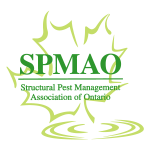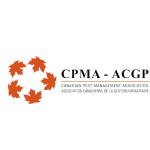Exterminators do not simply walk into a home and begin spraying in every general direction in the hopes of hitting a pest. They do not disregard the customer’s inspection and simply treat the house the way they feel it should be treated. Excessive pesticide use, leftover pesticide from incorrect calculations, or non at all, and general mismanagement can lead to harm coming to humans, animals and the environment. That is why the system of Integrated Pest Management was devised by the Ministry of the environment. This process taught to all licensed exterminators and certified technicians is a process of inspecting and controlling. The goal is not to completely exterminate the entire infestation in one visit as that would require an unhealthy quantity of pesticides. Instead the technician or exterminator with creating a plan starting with identifying the pest, exactly. The exterminator may take one of the pests to an entomologist for proper identification which will lead the exterminator to specific locations where the pest may be hiding. With a focus on those locations and stressing preventive measures over direct treatment, the pest can be fully exterminated without any danger to the people in the home or office, to the ecology surrounding it and to the exterminator who does the spraying. That is not all though. This process is used to carefully cultivate a standard of professionalism that will expand the trust in the ministry and extermination in general.
If you are looking for an exciting career in pest control, make sure to read our posts on Pest Control Jobs!
If you have a pest issue calling an exterminator should not be your first move. Unless the situation is untenable then you may want to go straight for the call. However, if you can, investigate first. See if you can find from where they are entering or find areas of high activity and population. This inspection will help you inform the exterminator of the issue and with a photo of the pest on hand, the exterminator will know exactly how to treat the infestation. While it may be frustrating knowing that the exterminator could just blast your home with pesticides and eliminate the pest in one treatment the number of pesticides will not dry quickly enough, could stain walls and furniture and could toxify the environment so thoroughly that human occupancy becomes dangerous. An over toxified house is one that has had too much or too many pesticide treatments in too short a time, the result is that the pesticides cannot fully dry and create an atmosphere of toxicity that can harm a person who stays in the home or apartment for an extended period. As exterminators who do not take proper precautions can suffer from slow pesticide poisoning so to can a customer experience those effects by demanding another treatment before the first has completed its goal.
In the case of bed bugs, the low toxicity treatment is to treat with steam and insecticide which is a far less toxic method than what could be done. This keeps the family living in the home safe from over toxicity and allows the exterminator to return two weeks later to kill the eggs. Some treatments will kill them off in one day but most will damage your home and leave possible toxicity that could harm your family.






